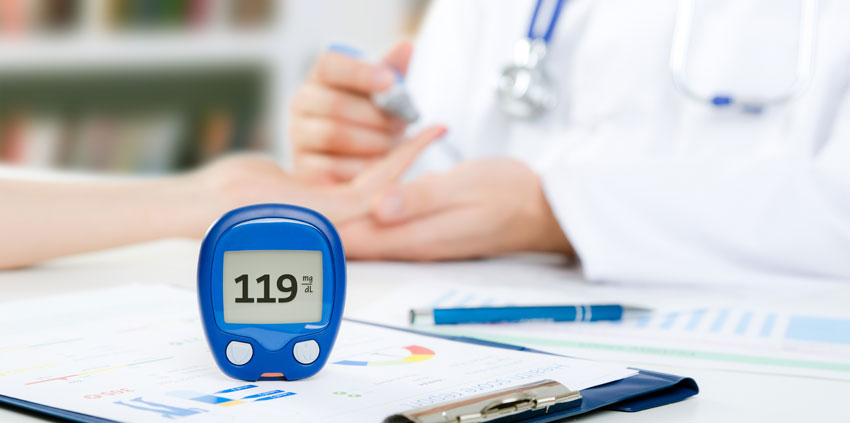During February’s American Heart Month, the National Heart, Lung, and Blood Institute (NHLBI) reaffirms its commitment to increasing awareness about heart disease among women and helping women take steps to reduce their own personal risk of developing heart disease.
In support of the The Heart Truth campaign, Women Fitness team elaborates on the ten commandments for a healthy heart:

![]() Know your risk factors for heart disease– Risk factors are conditions, habits, family history, and other facts about yourself that make you more likely to develop certain diseases. The more risk factors you have, the higher your risk of getting certain diseases. Some risk factors such as age or family history can’t be controlled. But many can be controlled by making changes in the way you live. African American, Hispanic and Native American women are all at greater risk of heart disease than white women and are also more likely to have contributing risk factors such as high blood pressure, high cholesterol levels and obesity. Heart disease accounts for 45 percent of all deaths in women, far greater than all cancers combined. In fact, women are four to six times more likely to die from heart disease than they are from breast cancer. After menopause, women are more apt to get heart disease, in part because their body’s production of estrogen drops. Women who have gone through early menopause, either naturally or because they have had a hysterectomy, are twice as likely to develop heart disease as women of the same age who have not yet gone through menopause.
Know your risk factors for heart disease– Risk factors are conditions, habits, family history, and other facts about yourself that make you more likely to develop certain diseases. The more risk factors you have, the higher your risk of getting certain diseases. Some risk factors such as age or family history can’t be controlled. But many can be controlled by making changes in the way you live. African American, Hispanic and Native American women are all at greater risk of heart disease than white women and are also more likely to have contributing risk factors such as high blood pressure, high cholesterol levels and obesity. Heart disease accounts for 45 percent of all deaths in women, far greater than all cancers combined. In fact, women are four to six times more likely to die from heart disease than they are from breast cancer. After menopause, women are more apt to get heart disease, in part because their body’s production of estrogen drops. Women who have gone through early menopause, either naturally or because they have had a hysterectomy, are twice as likely to develop heart disease as women of the same age who have not yet gone through menopause.
Important risk factors for heart disease that you can modify:
- High blood pressure
- High blood cholesterol
- Diabetes
- Smoking
- Being overweight
- Being physically inactive.

![]() Talk to your doctor about reducing your risk of heart disease. Make sure you follow-up with your health care provider every year for a checkup.
Talk to your doctor about reducing your risk of heart disease. Make sure you follow-up with your health care provider every year for a checkup.
- Ask your doctor about the ultra-sensitive C-reactive protein (us-CRP) blood test. High us-CRP levels are related to an increased risk of heart attack, stroke, peripheral vascular disease and restenosis (reclosing) of the arteries after angioplasty procedures.
- Homocysteine is a protein in the blood. High levels of homocysteine — above 10 — are associated with an increased risk of cardiovascular disease. There have been conflicting studies about the benefits and risks related to treatment of elevated homocysteine levels with folic acid and B vitamins. Therefore, ask your doctor before taking these supplements. Click here, to learn about more tests.

![]() Have your blood pressure checked regularly– Blood pressure is the force your blood makes against your artery walls. If this pressure is too high, over time it can damage your artery walls. There are two kinds of pressure. Systolic is the pressure as your heart pumps blood into your arteries. Diastolic is the pressure between beats, when your heart relaxes. To lower your risk of heart disease, your blood pressure should be less than 120 systolic/80 diastolic.
Have your blood pressure checked regularly– Blood pressure is the force your blood makes against your artery walls. If this pressure is too high, over time it can damage your artery walls. There are two kinds of pressure. Systolic is the pressure as your heart pumps blood into your arteries. Diastolic is the pressure between beats, when your heart relaxes. To lower your risk of heart disease, your blood pressure should be less than 120 systolic/80 diastolic.
![]()
Know your cholesterol numbers. These are types of fat found in your blood and other parts of your body. The body needs small amounts of them to work, but too much can cause a problem. The extra amounts can cling to, and clog, your arteries. A blood test can measure your levels of:
- Low-density lipoprotein (LDL) or “bad” cholesterol – High levels lead to buildup ofcholesterol in arteries. To lower your heart diseaserisk, your LDL level should be less that 100 mg/dL.
- High-density lipoprotein (HDL) or “good” cholesterol – High levels of this type are actually good. HDL cholesterol helps lower the total cholesterol level in your body. To lower your heart disease risk, your HDL levels should be above 60 mg/dL.
- Total cholesterol – This is your LDL cholesterol plus HDL cholesterol. To lower your heart disease risk, your total cholesterol should be less than 200 mg/dL.
- Triglycerides– Another artery clogger. To lower your heart disease risk, your triglyceride level should be less than 150 mg/dL.

![]()
Have your blood sugar level checked for diabetes- The only sure way to know whether you have prediabetes is by getting a fasting plasma glucose (FPG) test or an oral glucose tolerance test (OGTT). Healthy blood sugar levels are important to everyone, not just people with diabetes. Controlling your blood sugar starts with the basics: regular exercise, a balanced diet, and weight control. High blood sugar isn’t good — it could quickly put you on the path to type 2 diabetes. But keeping blood glucose from getting too high is harder when you get older, even if you’re healthy. Luckily, exercise is an excellent antidote. Both resistance training and cardio exercise can help. Normally blood glucose levels stay within narrow limits throughout the day: 4 to 8mmol/l. But they are higher after meals and usually lowest in the morning. The ideal values are:
- 4 to 7mmol/l before meals
- less than 10mmol/l 90 minutes after a meal
- around 8mmol/l at bedtime.
![]()
Do not smoke cigarettes or use other tobacco products-Smoking cigarettes increases the risk of heart disease, which is America’s number one killer. Almost 180,000 Americans die each year from cardiovascular disease caused by smoking. Smoking, high blood pressure, high blood cholesterol, and lack of exercise are all risk factors for heart disease, but smoking alone doubles the risk of heart disease. Among those who have previously had a heart attack, smokers are more likely than non-smokers to have another.

![]()
Eat for your heart health- No matter which eating plan you follow, the following guidelines are recommended:
- Total fat intake should be less than 30 percent of total calories daily.
- Saturated fatty acid intake should be less than 10 percent of total calories daily.
- Polyunsaturated fatty acid intake should be no more that 10 percent of total calories daily.
- Monounsaturated fatty acids make up the rest of total fat intake, about 10 to 15 percent of total calories daily.
- Cholesterol intake should be no more than 300 milligrams per day.
- Sodium intake should be no more than 3000 milligrams per day.
- Beware of chemicals in your food like caffeine, MSG, and other food additives.
Don’t forget that you can enjoy the taste of eating right.
![]()
Get regular physical activity- Exercise has a number of effects that benefit the heart and circulation (blood flow throughout the body). These benefits include improving cholesterol and fat levels, reducing inflammation in the arteries, helping weight loss programs, and helping to keep blood vessels flexible and open. Studies continue to show that physical activity and avoiding high-fat foods are the two most successful means of reaching and maintaining heart-healthy levels of fitness and weight. For the greatest overall health benefits, experts recommend that you do 20 to 30 minutes of aerobic activity three or more times a week and some type of muscle strengthening activity and stretching at least twice a week. However, if you are unable to do this level of activity, you can gain substantial health benefits by accumulating 30 minutes or more of moderate-intensity physical activity a day, at least five times a week. Some recommended aerobic activities are walking, hiking, jogging,bicycling, swimming, jumping rope, and roller skating.

![]()
Aim for a healthy weight- Energy balance is important for maintaining a healthy weight. The amount of energy or calories you get from food and drinks (energy IN) is balanced with the energy your body uses for things like breathing, digesting, and being physically active (energy OUT). You can reach and maintain a healthy weight if you:
- Follow a healthy diet, and if you are overweight or obese, reduce your daily intake by 500 calories forweight loss
- Are physically active
- Limit the time you spend being physically inactive.
![]()
Know the signs and symptoms of a heart attack and the importance of seeking medical help immediately- Women’s symptoms may include:
- Upper back or shoulder pain
- Jaw pain or pain spreading to the jaw
- Pressure or pain in the center of the chest
- Lightheadedness
- Pain that spreads to the arm
- Unusual fatigue for several days
In a multi-center study of 515 women who had an acute myocardial infarction (MI), the most frequently reported symptoms were unusual fatigue, sleep disturbances, shortness of breath, indigestion and anxiety. The majority of women (78%) reported at least one symptom for more than one month before their heart attack. Only 30% reported chest discomfort, which was described as an aching, tightness, pressure, sharpness, burning, fullness or tingling. [Reference: McSweeney J, et al. Women’s Early Warning Symptoms of Acute Myocardial Infarction. Circulation. 2003; 108(21):2619-2623.]
Visit www.hearttruth.gov for more information on The Heart Truth campaign, including The Healthy Heart Handbook for Women and the Red Dress Pin.
Content Support:
Disclaimer
The Content is not intended to be a substitute for professional medical advice, diagnosis, or treatment. Always seek the advice of your physician or other qualified health provider with any questions you may have regarding a medical condition.



